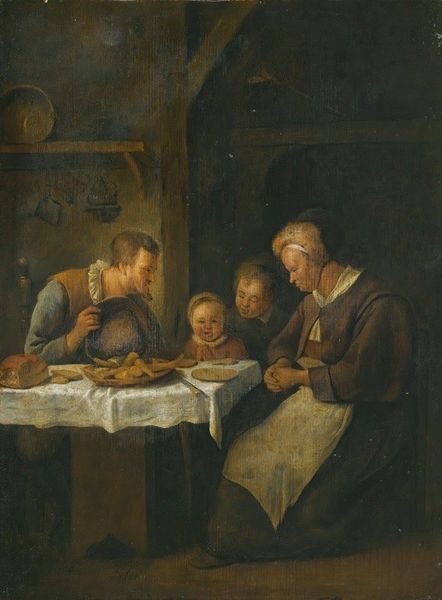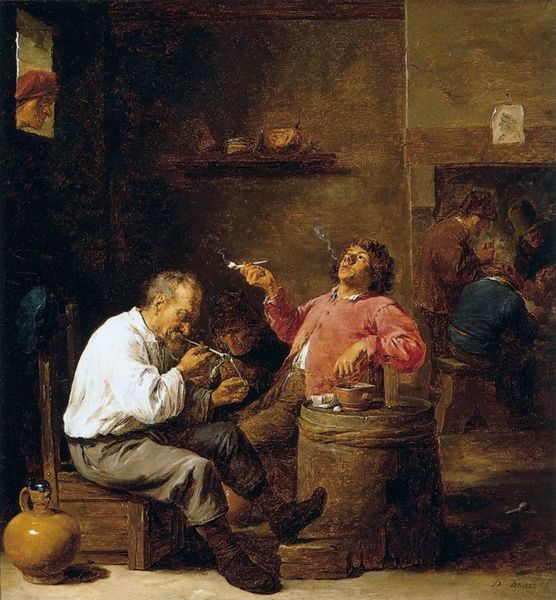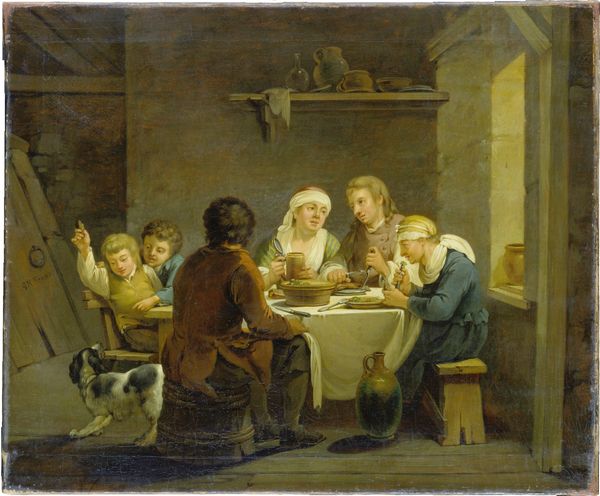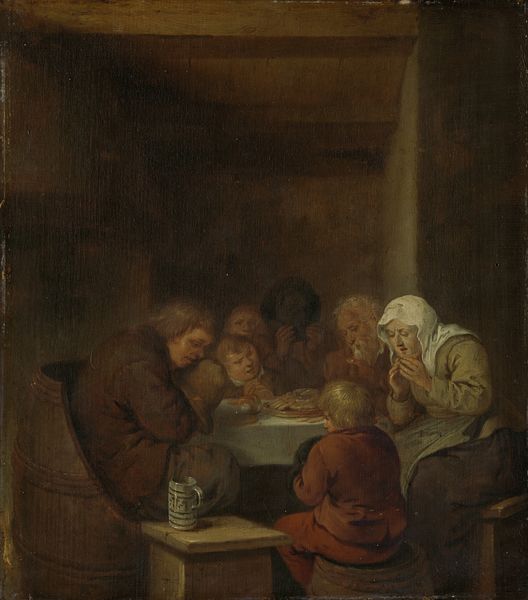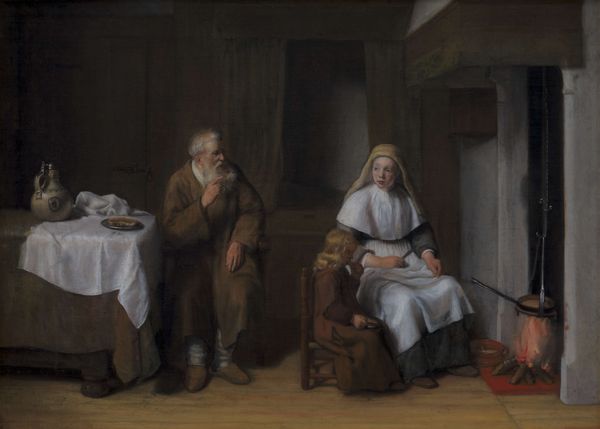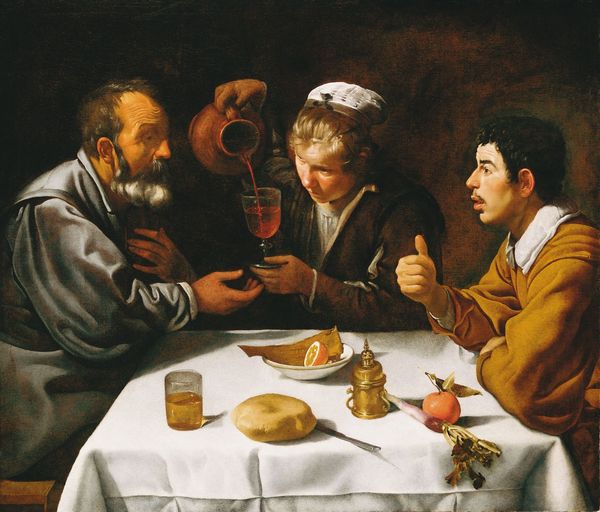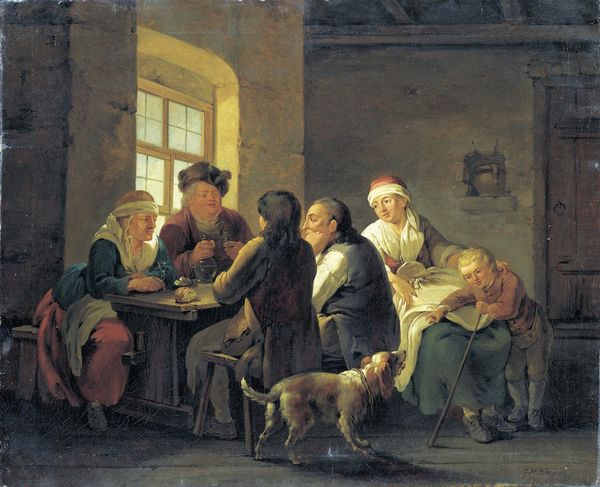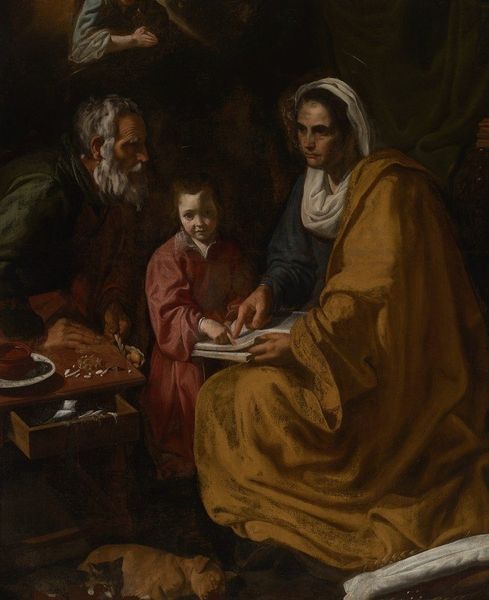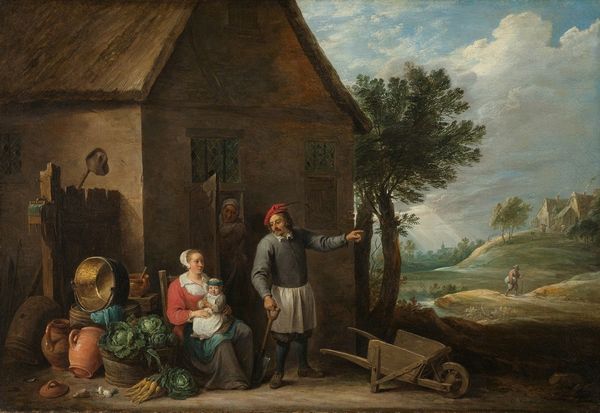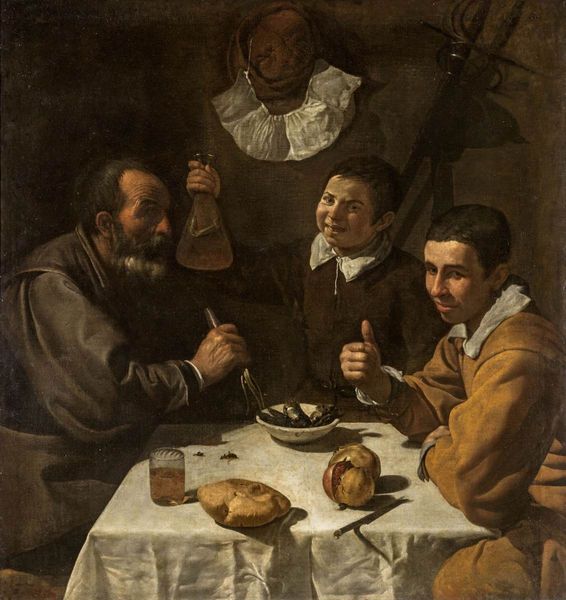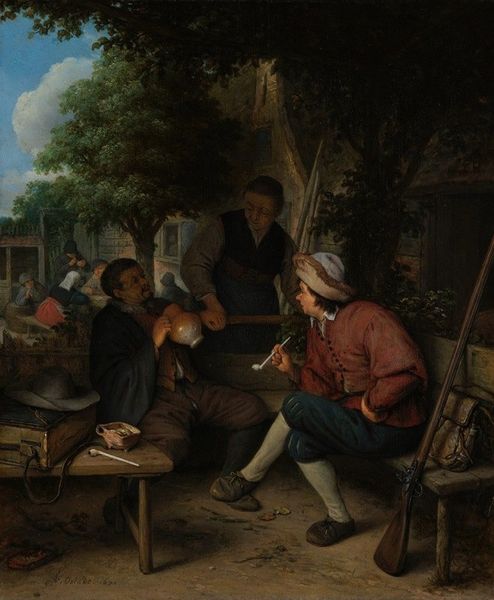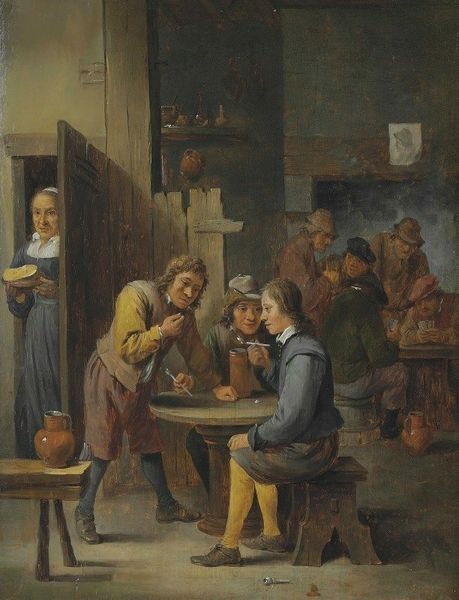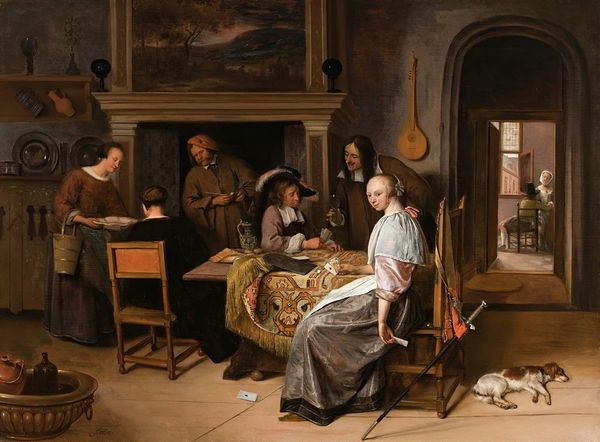
painting, oil-paint
#
narrative-art
#
baroque
#
dutch-golden-age
#
painting
#
oil-paint
#
landscape
#
figuration
#
genre-painting
Copyright: Public Domain: Artvee
Editor: Okay, so here we have Jan Steen's "Supper at Emmaus," painted around 1665. It's oil on canvas, and there's such a mix of the everyday and the...divine. There’s something really unsettling in this scene. It feels off somehow, theatrical, yet domestic. What jumps out at you when you look at this? Curator: Ah, Jan Steen! He had such a knack for capturing the quirky side of life. It’s a window into a Dutch Golden Age inn, or is it something more? See how the light catches that ghostly figure in the back? The light, like divine knowledge, illuminates everything – not equally, mind you. And, goodness, look at those figures at the table. Their reactions aren't what one expects. Do you notice the scattering of objects on the ground and table? Like clues after a great magician's disappearing act. What do they say to you? Editor: Clues! I like that. I hadn’t really focused on the…stuff. Broken eggshells…playing cards? It makes me wonder if there’s a gambling element at play. Everyone at the table seems preoccupied, except, you are right, maybe not devout revelation you would expect when you see ghost Jesus turn up in a wall? And there is certainly not one person behaving as expected Curator: Exactly! Steen loved poking at expectations. Look at that servant hovering, observing like he knows a secret. Perhaps Steen is suggesting that spirituality isn't about solemnity but finding the divine in the mess of daily existence – and perhaps, even a wink and a nudge towards disbelief. The painting asks: What if revelation looks less like stained glass and more like a tavern brawl, eh? What does this "revelation" then tell us? Editor: Wow, a tavern brawl revelation! So it’s a play on expectations. I always thought these older paintings had to be serious! It is such an unconventional depiction of the biblical moment in Emmaus. Curator: Indeed! Steen nudges us, urging that enlightenment, like a shared meal, might involve a hearty dose of humour and a healthy pinch of irreverence, rather than mere holy expectation. It is a refreshing way to approach such solemn paintings Editor: Well, I'll definitely never look at a "Supper at Emmaus" the same way again! Thanks for helping me find the irreverence.
Comments
rijksmuseum about 2 years ago
⋮
On their way to Emmaus, two Disciples unexpectedly encounter Christ. At first they do not recognise him. As they sit to eat and they break bread, they realise who he is. And at that moment, he disappears. That is the moment Jan Steen depicts here: Christ’s shade is just visible on the left beneath the arbour.
Join the conversation
Join millions of artists and users on Artera today and experience the ultimate creative platform.

